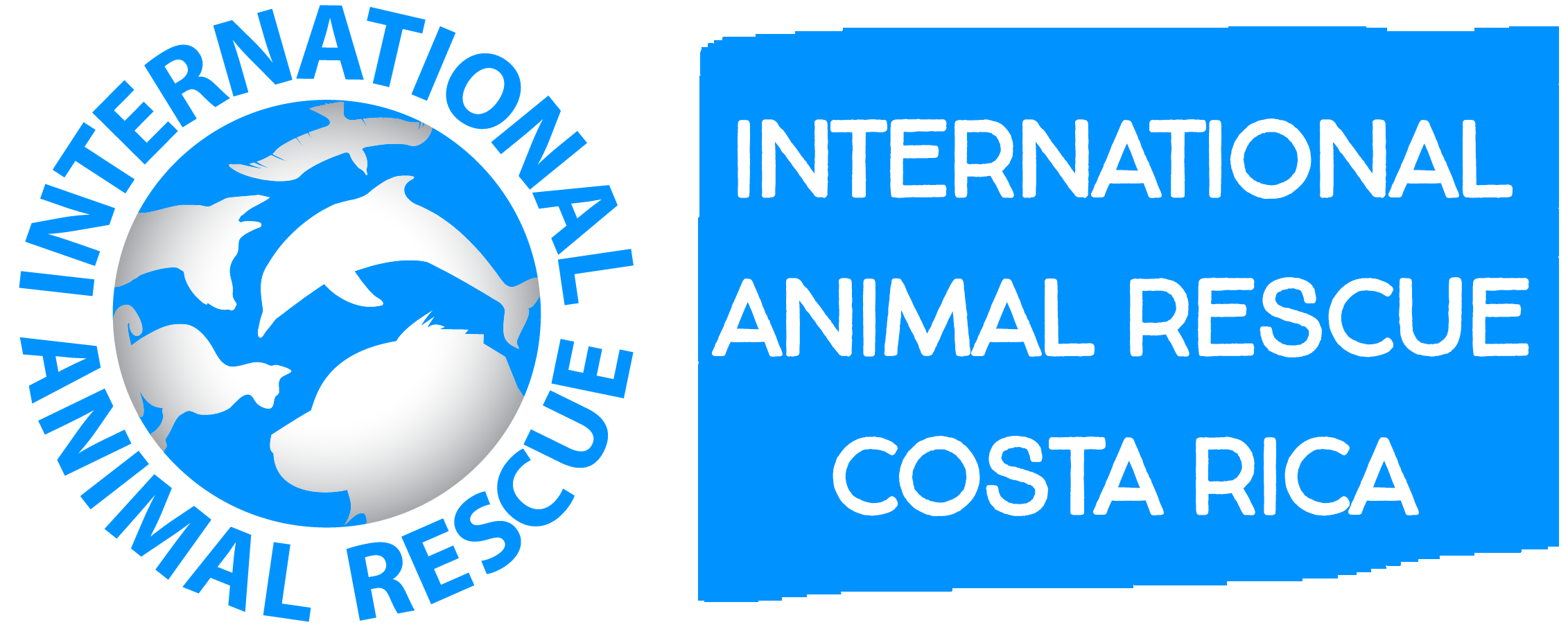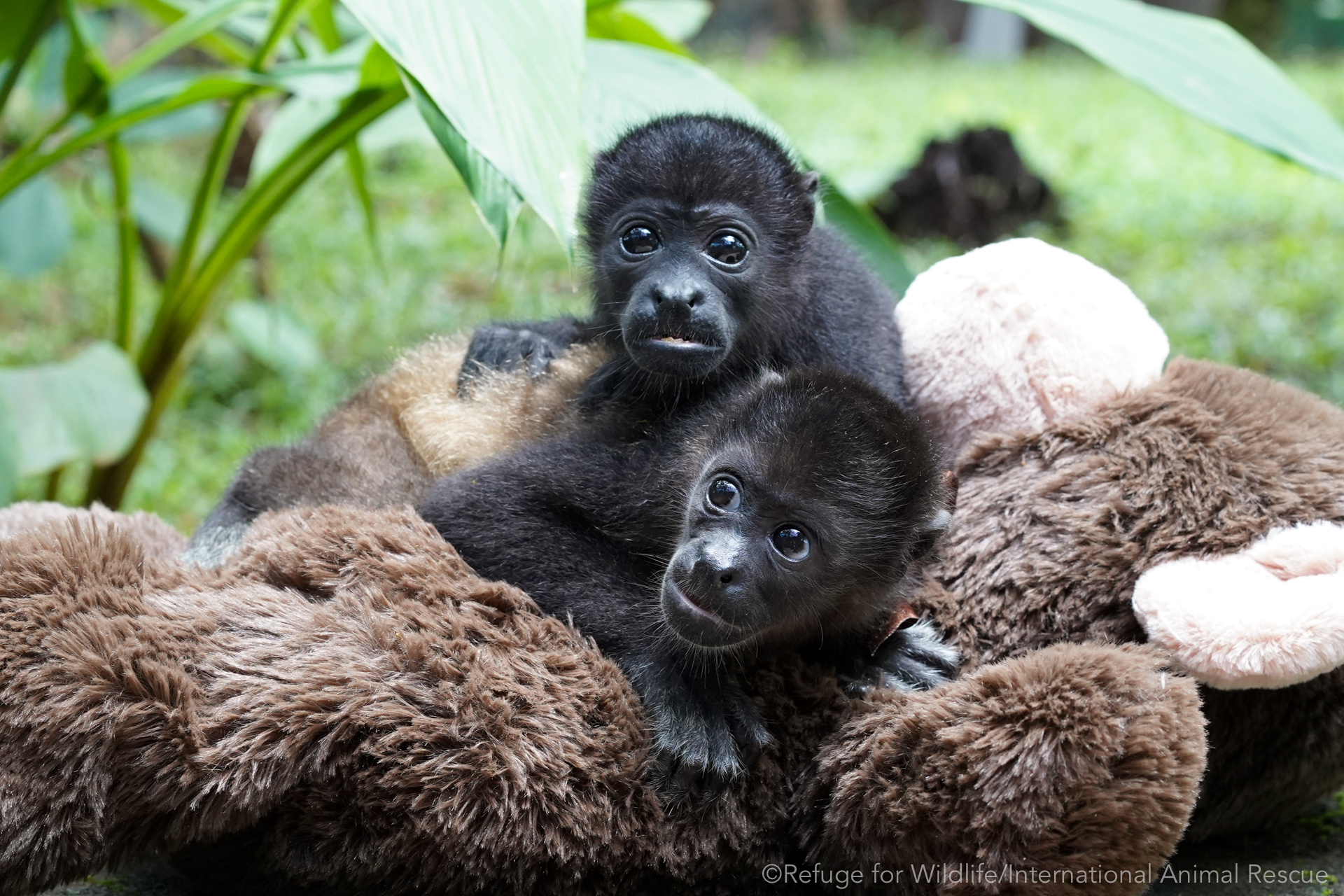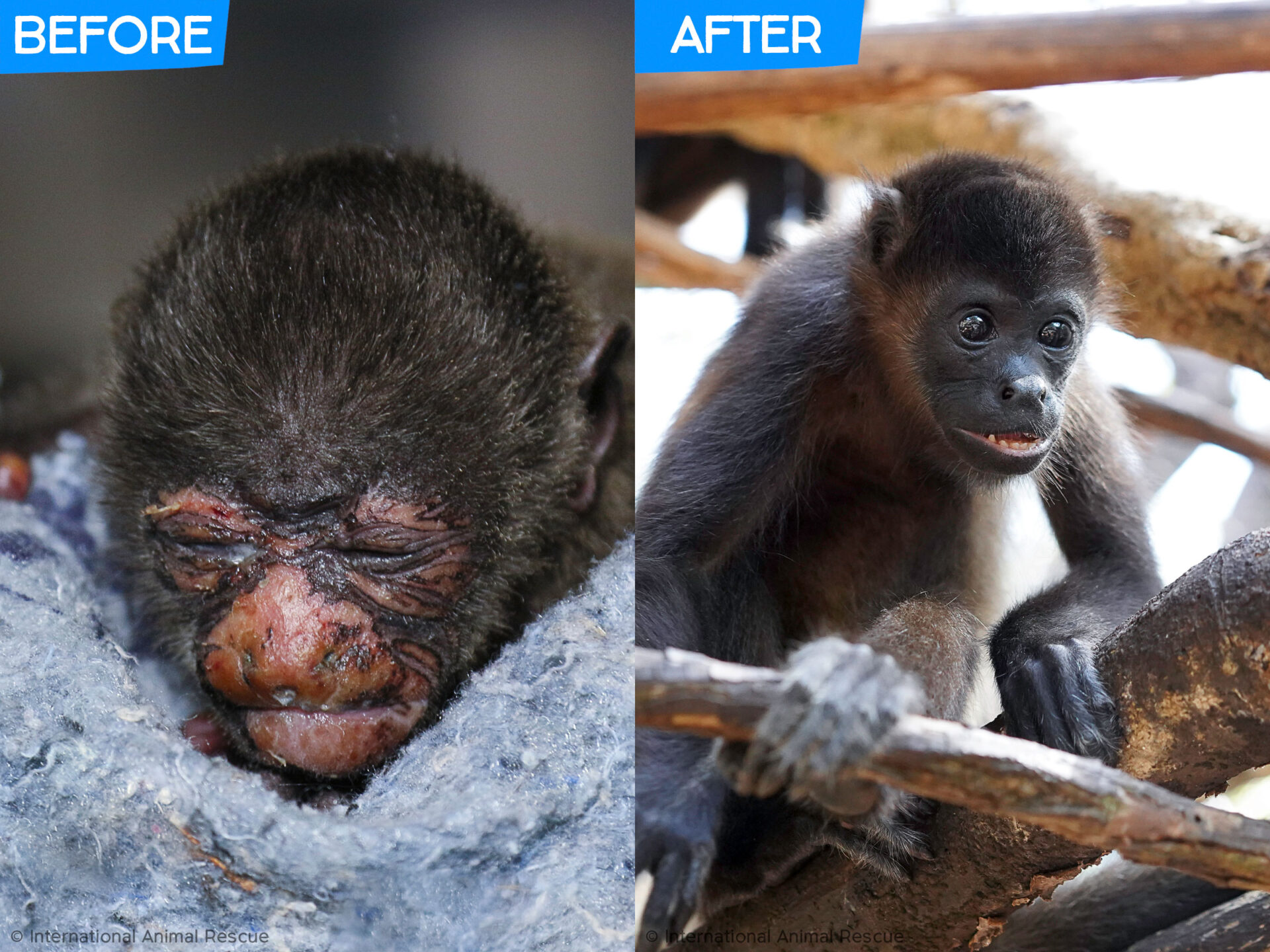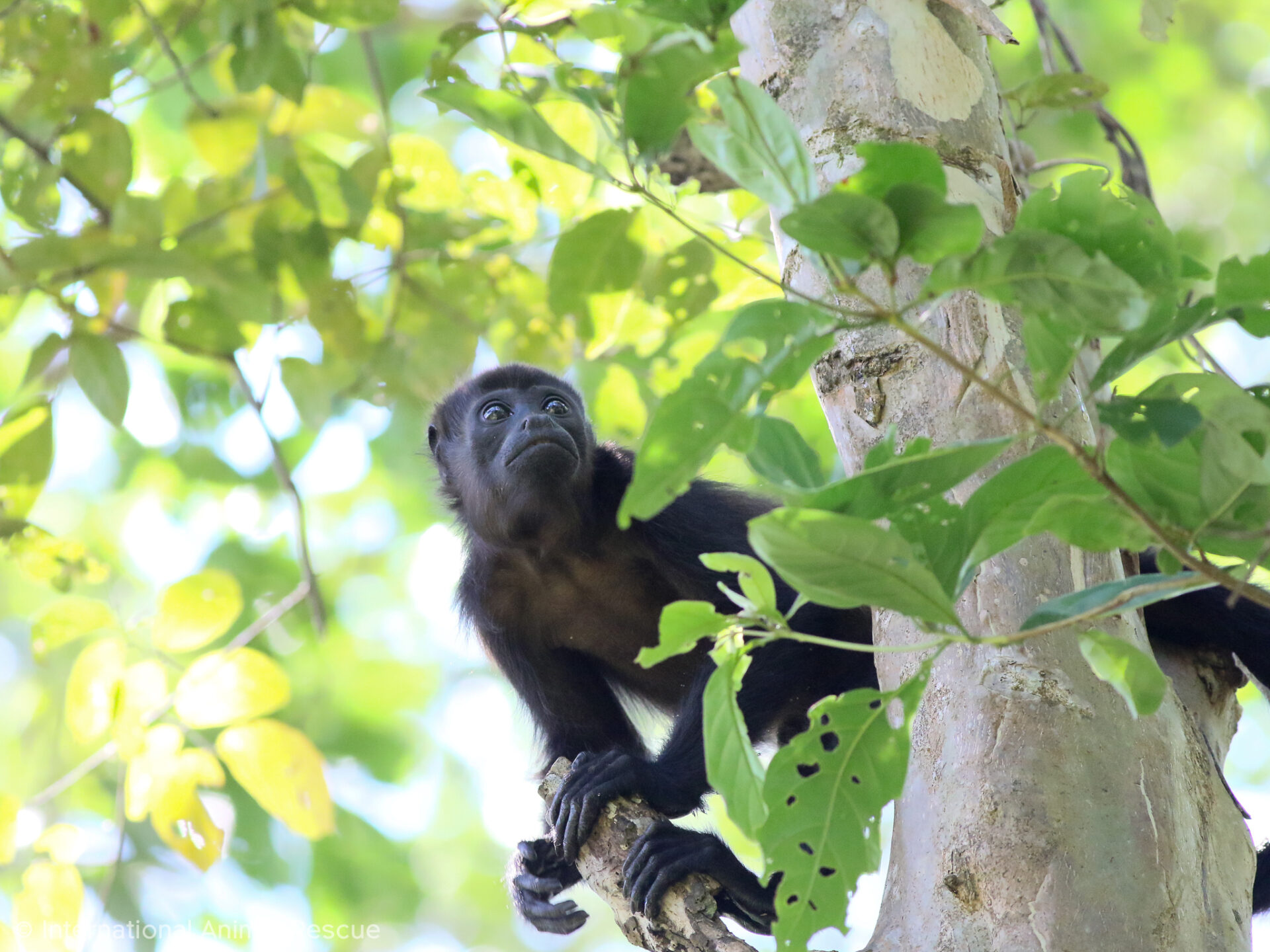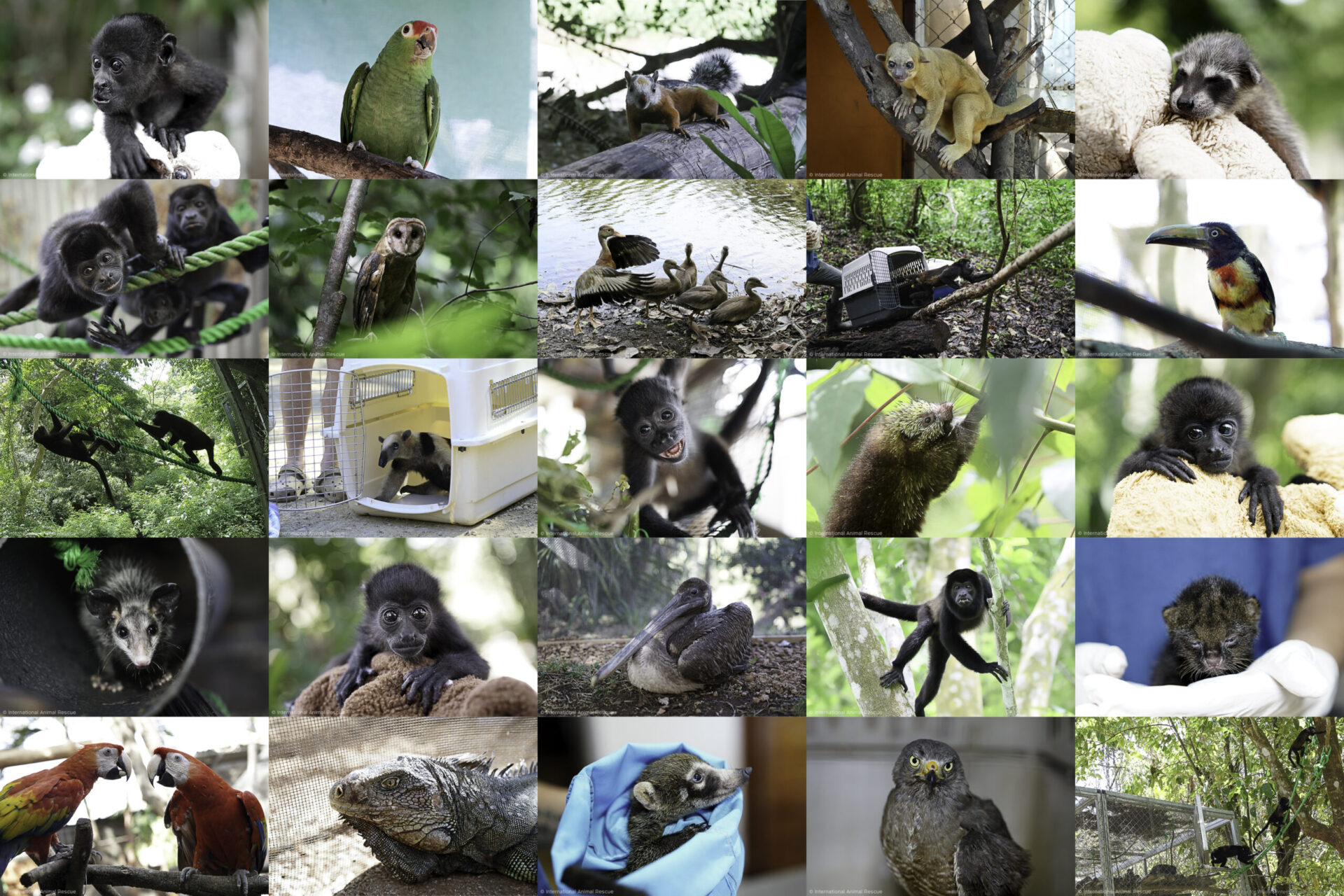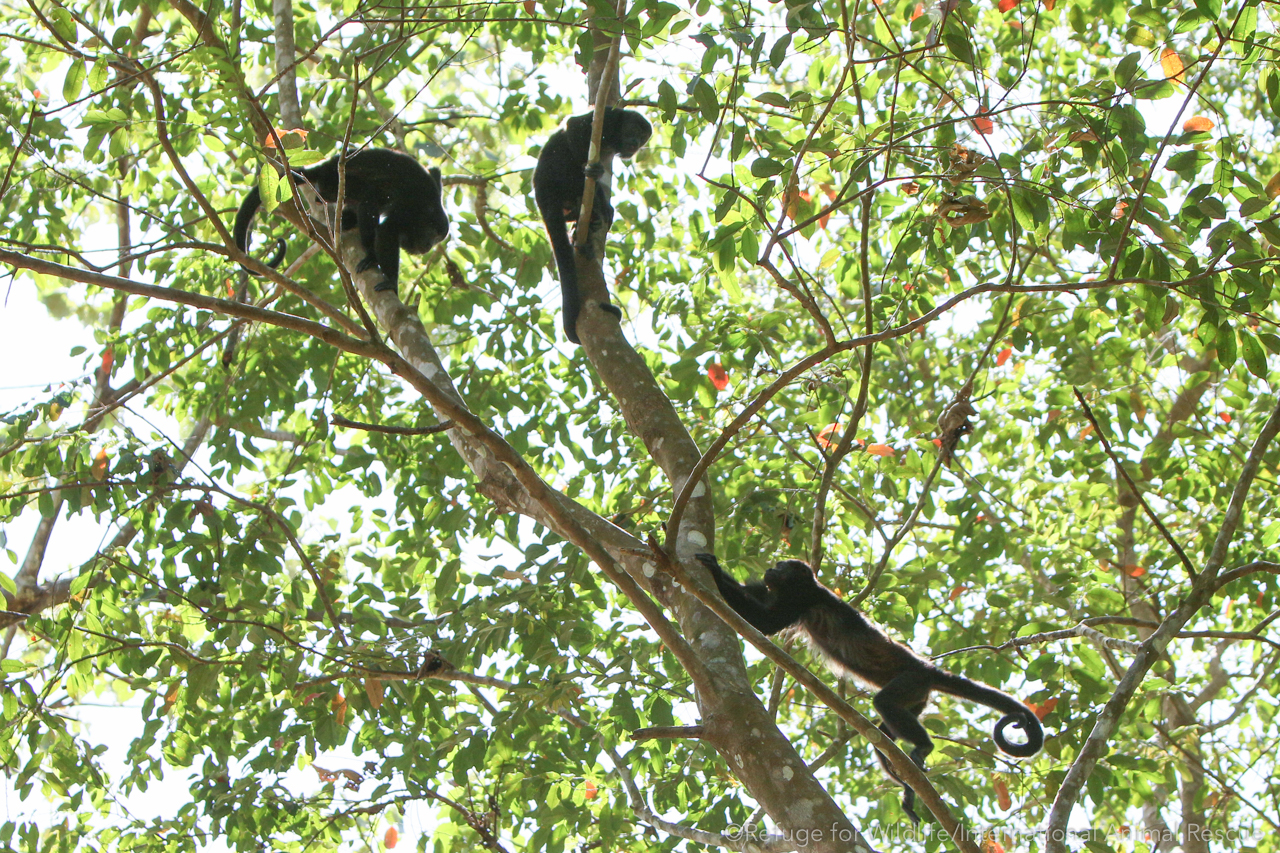
2019 Year in Review
 Orphaned Howler Rehabilitation Program
Orphaned Howler Rehabilitation Program
This past year we saw several of our orphans complete the program and return to the forest! In February we released Jordanny, Sophie and Lola who had been at Refuge For Wildlife since being rescued as tiny fragile babies four years earlier. Then after years of rehabilitation and care, Mango, Ana, and Stan returned to the forest in August!

Watching all 6 monkeys grow into independent adults was extremely fulfilling for all the staff and volunteers at Refuge for Wildlife. Watching them confidently climb out of our newly built release enclosure and into the surrounding treetops was the ultimate reward for years of hard work and dedication.
Currently, we have 37 orphaned howler monkeys in our Orphaned Howler Rehabilitation Program. There are 6 young adults preparing for release in January, 7 young monkeys inside our Juvenile Nursery, 6 infants inside our Junior Nursery and 18 babies inside our Infant Nursery.
Read more: http://prq.wsn.mybluehost.me/orphaned-howler-progress-report-august-2019/
Our Top Story of 2019: Rarely Seen Wild Cat Gets Stuck in Fence

 In October 2019 our emergency rescue team received a call from a local resident reporting a jaguarundi (Herpailurus yaguarondi) that was stuck in a fence in Playa Guiones. The jaguarundi had been traveling between habitats when it was scared by barking dogs and ran headfirst into the chainlink, getting his head stuck. The Bomberos de Nosara assisted the Refuge for Wildlife emergency team with the difficult rescue which required the fence to be cut.
In October 2019 our emergency rescue team received a call from a local resident reporting a jaguarundi (Herpailurus yaguarondi) that was stuck in a fence in Playa Guiones. The jaguarundi had been traveling between habitats when it was scared by barking dogs and ran headfirst into the chainlink, getting his head stuck. The Bomberos de Nosara assisted the Refuge for Wildlife emergency team with the difficult rescue which required the fence to be cut.
 Unfortunately, the jaguarundi suffered a severe injury; he was not able to properly move his hind limbs. At the Refuge wildlife clinic, we did several tests, including an x-ray and blood work that showed no clear reason for the movement impairment. More tests and specialist longer-term care was required for neurological symptoms. The Refuge quickly contacted Centro Rescate Las Pumas, a rescue center that specializes in wild cats, where he has received comprehensive care from the best experts in the field. The jaguarundi has been improving a lot and when he has finished physiotherapy at Las Pumas he will be released. Thanks to the joint efforts of several non-profit groups, these interesting and unique creatures are being saved.
Unfortunately, the jaguarundi suffered a severe injury; he was not able to properly move his hind limbs. At the Refuge wildlife clinic, we did several tests, including an x-ray and blood work that showed no clear reason for the movement impairment. More tests and specialist longer-term care was required for neurological symptoms. The Refuge quickly contacted Centro Rescate Las Pumas, a rescue center that specializes in wild cats, where he has received comprehensive care from the best experts in the field. The jaguarundi has been improving a lot and when he has finished physiotherapy at Las Pumas he will be released. Thanks to the joint efforts of several non-profit groups, these interesting and unique creatures are being saved.
Miracle Stories from 2019
Federico
 Federico was severely injured when he was hit by a car in February 2019. In total, Federico had 11 lacerations across his entire body (legs, arms, hands, and face) and an exposed skull fracture. Federico had a very bad prognosis and we didn’t even expect him to survive the night, but thanks to the expert care he received from our veterinary staff, Federico started to improve. After many weeks of rehabilitation, it was an emotional moment as we watched Federico climb up into the treetops for a second chance at life.
Federico was severely injured when he was hit by a car in February 2019. In total, Federico had 11 lacerations across his entire body (legs, arms, hands, and face) and an exposed skull fracture. Federico had a very bad prognosis and we didn’t even expect him to survive the night, but thanks to the expert care he received from our veterinary staff, Federico started to improve. After many weeks of rehabilitation, it was an emotional moment as we watched Federico climb up into the treetops for a second chance at life.
Read the full story here: http://prq.wsn.mybluehost.me/10-animals-rescued-rehabilitated-released/
Elmer
 We started off 2019 with a very upsetting rescue of a baby vulture (Coragyps atratus) who had been cruelly injured by humans who intended to kill him by pouring hot oil all over his tiny body. He was rushed to the Refuge wildlife clinic and treated for severe burns. Thankfully Elmer was able to grow up and not suffer any permanent damage from the incident and was released as soon as he old enough to be on his own.
We started off 2019 with a very upsetting rescue of a baby vulture (Coragyps atratus) who had been cruelly injured by humans who intended to kill him by pouring hot oil all over his tiny body. He was rushed to the Refuge wildlife clinic and treated for severe burns. Thankfully Elmer was able to grow up and not suffer any permanent damage from the incident and was released as soon as he old enough to be on his own.
Read the full story here: http://prq.wsn.mybluehost.me/baby-vulture-cruelly-attacked-humans-released/
Marisol

Back in early July 2018, Marisol was hit by a car in Tamarindo and badly broke her femur. She needed special emergency orthopedic surgery in San Jose to save her leg and thankfully donations from the public poured in! Although her rehabilitation took much longer than expected, we are thrilled to have given Marisol her freedom back. 2019 was made extra special when we were able to finally take Marisol back to her forest home!
Read all about Marisol’s story: http://prq.wsn.mybluehost.me/marisols-rehabilitation/
Cutest Rescues of 2019
This year we responded to 447 wildlife emergency calls and the following are the cutest rescues from 2019.
Read more here: http://prq.wsn.mybluehost.me/cutest-rescues-2019/
Youngest Rescue from 2019 – Lucas
 Little Lucas was only 3-4 weeks old when he became an orphan after his mother was attacked and killed by dogs in Santa Cruz. Thankfully Lucas did not have any injuries, but due to his young age, his odds of surviving without the care of his mother were not good. Even with the best veterinary care, fragile infants are the most difficult to treat in captivity, but thanks to our skilled veterinary team and staff, teeny Lucas has made it through the first critical weeks of his rehabilitation. Lucas is not 4 months old and thriving inside our infant nursery for orphaned howler monkeys.
Little Lucas was only 3-4 weeks old when he became an orphan after his mother was attacked and killed by dogs in Santa Cruz. Thankfully Lucas did not have any injuries, but due to his young age, his odds of surviving without the care of his mother were not good. Even with the best veterinary care, fragile infants are the most difficult to treat in captivity, but thanks to our skilled veterinary team and staff, teeny Lucas has made it through the first critical weeks of his rehabilitation. Lucas is not 4 months old and thriving inside our infant nursery for orphaned howler monkeys.

90 Releases in 2019!
Our mission is to rescue, rehabilitate and release and our hope is that every animal that needs our help can one day be returned to their forest home where they belong. In 2019 we released a total of 90 rehabilitated animals!
We are thrilled to report that this year we released 16 howler monkeys, 18 variegated squirrels, 15 opossums, 5 screech owls, 2 armadillos, 6 parakeets, 4 porcupines, 5 white-nosed coati, 3 black-bellied whistling ducks, 1 magpie jay, 1 barn own, 1 motmot, 1 aracari, 1 white-fronted parrot, 2 hawks, 1 clay-coloured thrush (yiguirro), 1 dove, 4 sparrows, 2 iguanas, and 1 rattlesnake.
Congratulations to the entire Refuge for Wildlife team for a job well done and all a special thank you to all our supporters who help us make releases possible.
Read the full story here: http://prq.wsn.mybluehost.me/wildlife-releases-2019/
Refuge Improvements in 2019
 As many of our supporters are already aware, Refuge for Wildlife has seen some big changes in the last couple of years. Thanks to the continued support of our partners International Animal Rescue, we have been able to grow and change for the better.
As many of our supporters are already aware, Refuge for Wildlife has seen some big changes in the last couple of years. Thanks to the continued support of our partners International Animal Rescue, we have been able to grow and change for the better.
 The Refuge has a dedicated 24-hour wildlife emergency rescue team that is fully trained on how to handle the most dangerous rescues, such as electrocutions. Thanks to a recent grant from Guanacaste Fund we have added some important improvements to our two rescue vehicles, so they are always stocked and ready to go in an emergency. Having responded to over 400 wildlife emergency calls this past year alone, these upgrades are essential so we can continue to save wild animals in a timely manner.
The Refuge has a dedicated 24-hour wildlife emergency rescue team that is fully trained on how to handle the most dangerous rescues, such as electrocutions. Thanks to a recent grant from Guanacaste Fund we have added some important improvements to our two rescue vehicles, so they are always stocked and ready to go in an emergency. Having responded to over 400 wildlife emergency calls this past year alone, these upgrades are essential so we can continue to save wild animals in a timely manner.
 Due to an increase in rescued wildlife, we have recently built several new enclosures specifically designed for faster rehabilitation. A new flight enclosure means that injured and orphaned birds now have a place for them to build up muscle strength and practice flying before release. This past year we released several owls, parrots, parakeets, and other small birds! We also built two new enclosures for animals rehabilitating from injuries that need specially designed spaces to recover. In 2020 we will be building a large enclosure for our sanctuary animals which means we can expand our howler nurseries and provide bigger outdoor areas.
Due to an increase in rescued wildlife, we have recently built several new enclosures specifically designed for faster rehabilitation. A new flight enclosure means that injured and orphaned birds now have a place for them to build up muscle strength and practice flying before release. This past year we released several owls, parrots, parakeets, and other small birds! We also built two new enclosures for animals rehabilitating from injuries that need specially designed spaces to recover. In 2020 we will be building a large enclosure for our sanctuary animals which means we can expand our howler nurseries and provide bigger outdoor areas.
 We recently added more advanced diagnostic equipment to our wildlife clinic, including blood analysis machines and an x-ray machine. We also have 2 incubators, an ultrasound machine, an autoclave and lab tools such as microscopes. The new equipment has allowed us to provide the best possible care for our wildlife and has made it possible for us to perform important research on how to diagnose and treat electrocuted howler monkeys.
We recently added more advanced diagnostic equipment to our wildlife clinic, including blood analysis machines and an x-ray machine. We also have 2 incubators, an ultrasound machine, an autoclave and lab tools such as microscopes. The new equipment has allowed us to provide the best possible care for our wildlife and has made it possible for us to perform important research on how to diagnose and treat electrocuted howler monkeys.

